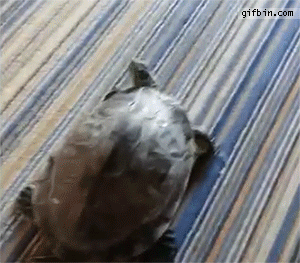 |
| Biologia-Vida | Photo: Unknown photographer |
Você sabia que as tartarugas sentem "cócegas"?
O
casco da tartaruga, composto por carapaça (parte superior) e plastrão
(parte de baixo), é formado por ossos e coberto por uma camada da
proteína queratina (mesma substância presente em nossas unhas e
cabelos). Ao contrário do que muitas pessoas acreditam, a tartaruga não
corre risco de crescer mais do que o casco, pois essa camada de
queratina, chamada de escutelo, é
trocada várias vezes durante o ano, para permitir que o casco cresça
juntamente com o animal. É por isso que as tartarugas se esfregam em
pedras e ficam no sol, para secar o escutelo e facilitar a troca, além
de se aquecerem já que não conseguem
manter calor constante no corpo. Além disso, há terminações nervosas abaixo do
casco que causam as cócegas que as tartarugas tanto gostam.
Did you know that turtles feel "tickling"?
The
shell of a turtle, compost of carapace (top) and plastron (bottom), is
formed by bones and covered by a layer made of the protein keratin (the
same substance present in our nails and hair). Contrary to what most
people believe, the turtle does not outgrow its shell, because these
keratin layers, called scutellum, sheds several times during the year to
allow the shell to grow along with the animal. That's why turtles rub
themselves in stone and stay in the sun, to dry the scutellum and
facilitate the shed, and warmth, since they are cold blooded animals and
cannot maintain constant heat in the body. Besids, there are nerve endings beneath the
carapace that causes the tickle that turtles like so much.
 |
| Photo: Mikael Buck/Rex Features |
 |
| Biologia-Vida | Image: Unknown |
Sources: AVPH / Animal Planet


Eu não da sabia que elas sentiam cócegas, só descobri quando peguei uma tartaruga linda que tenho para trocar areia da casa dela e brinquei passando a mão debaixo da barriga e ela se mexia toda fofinha 🥰🐢
ResponderExcluir